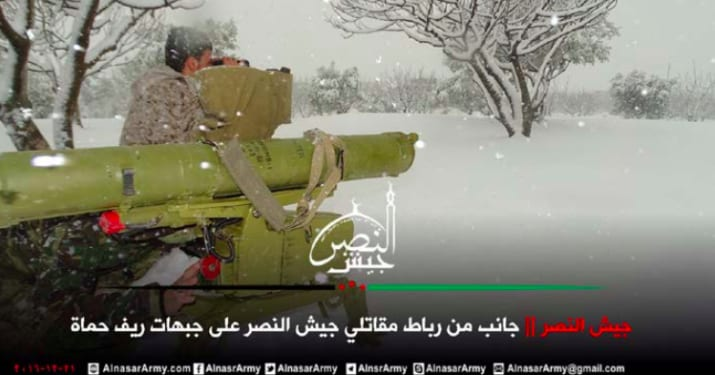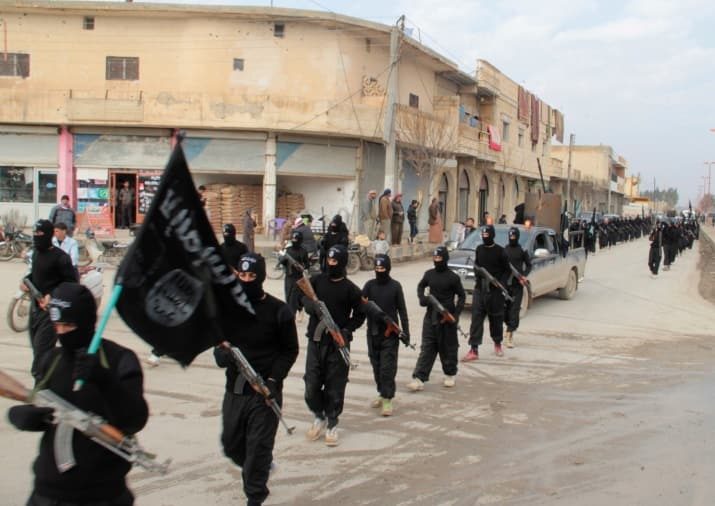A new report on how ISIS built its arsenal highlights how the US purchased munitions, intended for Syrian rebels, that ended up in the hands of the terrorist group.
A guided anti-tank missile ended up in the hands of ISIS terrorists less than two months after the US government purchased it in late 2015 - highlighting weaknesses in the oversight and regulation of America's covert arms programs, according to information published Thursday by an arms monitoring group called Conflict Armament Research (CAR).
Though the report says the missile was purchased by the US Army using a contractor, BuzzFeed News has learned that the real customer appears to have been the CIA. It was part of the spy agency's top secret operation to arm rebels in Syria to fight the forces of Syrian President Bashar al-Assad. The missile ended up in the hands of ISIS fighters in Iraq, according to the report.
The CIA declined to comment on the Obama-era program to back Syrian rebels, which was canceled by President Trump in July. The Pentagon did not provide information in time for publication.
The missile is one piece of a critical puzzle that is being solved only now, with ISIS on the run: How did the vast terror group arm its war machine? CAR spent three years tracking ISIS weapons as they were recovered by Iraqi, Syrian, and Kurdish forces - and found that what happened to the missile was no aberration. Indeed, the terror group managed to divert "substantial quantities of anti-armour ammunition" from weapons provided to Syrian opposition forces by the US or Saudi Arabia.

Comment: Saying that the policy "backfired" or that it was some sort of "oversight" is to assume that arming ISIS was not intentional. Maybe that assumption is wrong.
The report lists 12 cases where Eastern European weapons originally sent to the US military or US contractors appear to have been diverted, somehow, to ISIS.
The weapon purchased by the US government in 2015, a 9M111B missile, is highly portable and can land a devastating charge with pinpoint accuracy on tanks, trucks, or buildings.
BuzzFeed News has been tracking the CIA's procurement of 9M111 missiles as part of the deal for three years. In 2014, the CIA issued a contract to obtain 600 such missiles to Kiesler Police Supply, two sources said. Kiesler is a small Indiana company that frequently contracts with the CIA, according to experts in arms dealing. According to the CAR report, the contract for the missile that ended up in the possession of ISIS was handled by Kiesler.
The Indiana firm acquired those missiles from a Bulgarian company called SAGE Consulting, sources familiar with the transaction told BuzzFeed News. Bulgaria is a major source of the weapons that the US and other powers use to arm client armies.
In an email this summer, Kiesler declined to discuss the issue, writing that "we are not contractually authorized to disclose any information." The company also insisted it was not to blame for where the weapons ended up. "Once Kiesler delivers its products to the customer, it does not have visibility with respect to the Government's handling, use or disposition of the material," it said.
On Wednesday, a woman who answered the phone at Kiesler hung up immediately. Then, after she was called again, she said that "we don't talk to the media."
SAGE, a well-known broker in the Bulgarian capital Sofia, declined a request for interviews with BuzzFeed News. But two Bulgarian arms dealers say SAGE has indeed been manufacturing the 9M111 missile, at a factory called VMZ, for the US government. "They make them only for the Americans," one said, adding that the US buys as many as SAGE can manufacture.

In its report, CAR says the missile was originally purchased in Bulgaria by the US on Dec. 15, 2015. Just 59 days later, it was recovered in Ramadi, Iraq, after it had been fired by ISIS in combat.
In its report, CAR said a photo showed a US-backed Syrian rebel group, Jaysh al-Nasr, firing a missile that is identical to the one recovered from ISIS in Ramadi. The serial numbers on the ISIS missile and on one fired by Jaysh al-Nasr suggest that the two missiles were "part of the same supply chain," according to CAR's report.
A source close to the Syrian opposition said Jaysh al-Nasr fights chiefly in the north of Hama province, and was indeed aided by the CIA in Turkey. Two sources said the group received anti-tank missiles from the CIA.
It's unclear how a missile provided to Jaysh al-Nasr in Syria would have ended up across the Iraqi border in ISIS hands.
A former Syrian opposition figure said rebels were vetted to the best of the CIA's ability. The rebels, he said, were cautioned that every time they fired a weapon, they had to bring back the empty casings to prove they had in fact fired it rather than stolen or traded it.




Comment: This is rich, considering that yesterday Nikki Haley tried to pull a 'Colin Powell' by accusing Iran of providing a missile that Yemeni rebels used to target the Riyahd airport: Can we call the US a global threat now Nikki?
More on the CAR investigation here:
New investigation concludes US and EU weapons boosted 'quantity & quality' of ISIS arsenal